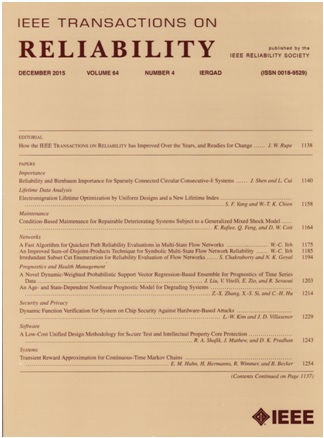基于顺序多任务学习和健康指标的航空发动机寿命预测与状态评估
IF 5.7
2区 计算机科学
Q1 COMPUTER SCIENCE, HARDWARE & ARCHITECTURE
引用次数: 0
摘要
本文介绍了一种利用增强型顺序多任务学习来准确有效地预测航空发动机剩余使用寿命(RUL)的方法。该方法创新地采用极端梯度增强提取关键性能参数,并构建表征性能退化的鲁棒健康指标。为了捕捉健康指标的时间序列特征,对传统的多门专家混合(MMoE)模型进行了改进,并将其与门控循环单元(GRU)网络相结合,建立了混合MMoE-GRU模型。此外,我们提出了一种动态权重平衡方法来优化多任务学习中联合损失函数的权衡。在新型商用模块化航空推进系统仿真(N-CMAPSS)数据集上的大量实验表明,该方法显著优于现有模型,在RUL预测和健康状态评估中实现了更低的错误率和更高的精度。该技术的均方根误差(RMSE)分别比长短期记忆(LSTM)、GRU、基于序列的底层信息门控循环单元(SB-GRU)、深度门控循环单元(DGRU)、多尺度多任务卷积神经网络(M2STCNN)和MMoE模型低7.1%、6.9%、1.3%、0.6%、1.7%和1.5%。该方法的平均准确率为96.732%,比LSTM、DGRU和MMoE分别提高10.629%、1.587%和2.499%。在N-CMAPSS数据集上验证了该方法的优越性。本文章由计算机程序翻译,如有差异,请以英文原文为准。
Aeroengine Life Prediction and Status Evaluation Based on Sequential Multitask Learning and Health Indicators
In this article, we introduce a novel method that uses enhanced sequential multitask learning to predict the remaining useful life (RUL) of an aeroengine accurately and efficiently while evaluating its status. The method innovatively employs extreme gradient boosting to extract critical performance parameters and construct a robust health indicator representing performance degradation. To capture the time-series features of the health indicator, the study modifies the traditional multigate mixture-of-experts (MMoE) model and integrates it with the gated recurrent unit (GRU) network, creating a hybrid MMoE-GRU model. In addition, we propose a dynamic weight balancing method to optimize the tradeoff in the joint loss function for multitask learning. Extensive experiments on the new commercial modular aero-propulsion system simulation (N-CMAPSS) dataset demonstrate that the proposed method significantly outperforms the existing models, achieving lower error rates and higher accuracy in RUL prediction and health status evaluation. The technique has a root-mean-square error (RMSE) of 7.1%, 6.9%, 1.3%, 0.6%, 1.7%, and 1.5% lower than the long short-term memory (LSTM), GRU, sequence-based bottom information gated recurrent unit (SB-GRU), deep gated recurrent unit (DGRU), multi-scale and multi-task convolutional neural network (M2STCNN), and MMoE models. The average accuracy of the proposed method is 96.732%, which is 10.629%, 1.587%, and 2.499% higher than those of the LSTM, DGRU, and MMoE, respectively. The superiority of the proposed method is validated on the N-CMAPSS dataset.
求助全文
通过发布文献求助,成功后即可免费获取论文全文。
去求助
来源期刊

IEEE Transactions on Reliability
工程技术-工程:电子与电气
CiteScore
12.20
自引率
8.50%
发文量
153
审稿时长
7.5 months
期刊介绍:
IEEE Transactions on Reliability is a refereed journal for the reliability and allied disciplines including, but not limited to, maintainability, physics of failure, life testing, prognostics, design and manufacture for reliability, reliability for systems of systems, network availability, mission success, warranty, safety, and various measures of effectiveness. Topics eligible for publication range from hardware to software, from materials to systems, from consumer and industrial devices to manufacturing plants, from individual items to networks, from techniques for making things better to ways of predicting and measuring behavior in the field. As an engineering subject that supports new and existing technologies, we constantly expand into new areas of the assurance sciences.
 求助内容:
求助内容: 应助结果提醒方式:
应助结果提醒方式:


